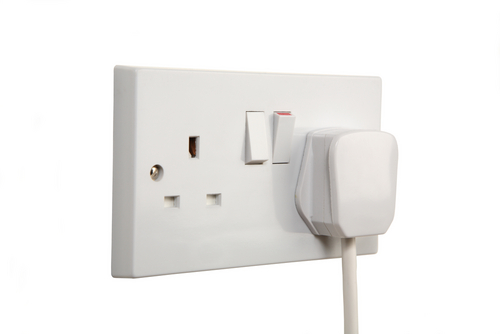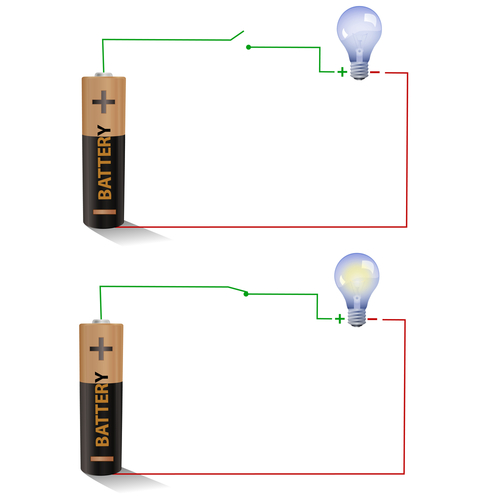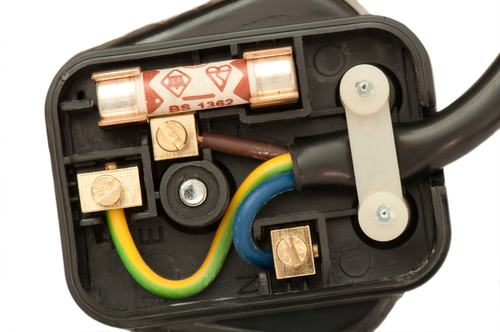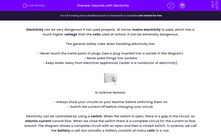Electricity can be very dangerous if not used properly. At home, mains electricity is used, which has a much higher voltage than the cells used at school. It can be extremely dangerous.
The general safety rules when handling electricity are:
- Never touch the metal parts of plugs (see a plug inserted into a socket in the diagram)
- Never poke things into sockets
- Keep water away from electrical appliances (water is a conductor of electricity)

In science lessons:
- Always show your circuits to your teacher before switching them on
- Switch the current off before changing your circuit
Electricity can be controlled by using a switch. When the switch is open, there is a gap in the circuit, so electric current cannot flow. When we close the switch, there is a complete circuit for the current to flow around. The diagram shows a complete circuit with an open and then a closed switch. In science, we call the battery a cell, but actually a battery consists of many cells in a row.

All wires are metal because metals conduct electricity, but they are covered in plastic to insulate us from the electricity and so avoid accidents. Have a look at the wires this plug contains:

You can see the multi-coloured wires for earth (yellow/green), live (brown) and neutral (blue). As almost all appliances come with a fitted and sealed plug, it's not as vital to learn how to wire a plug as it once was.
Let's have a look at the questions now.








